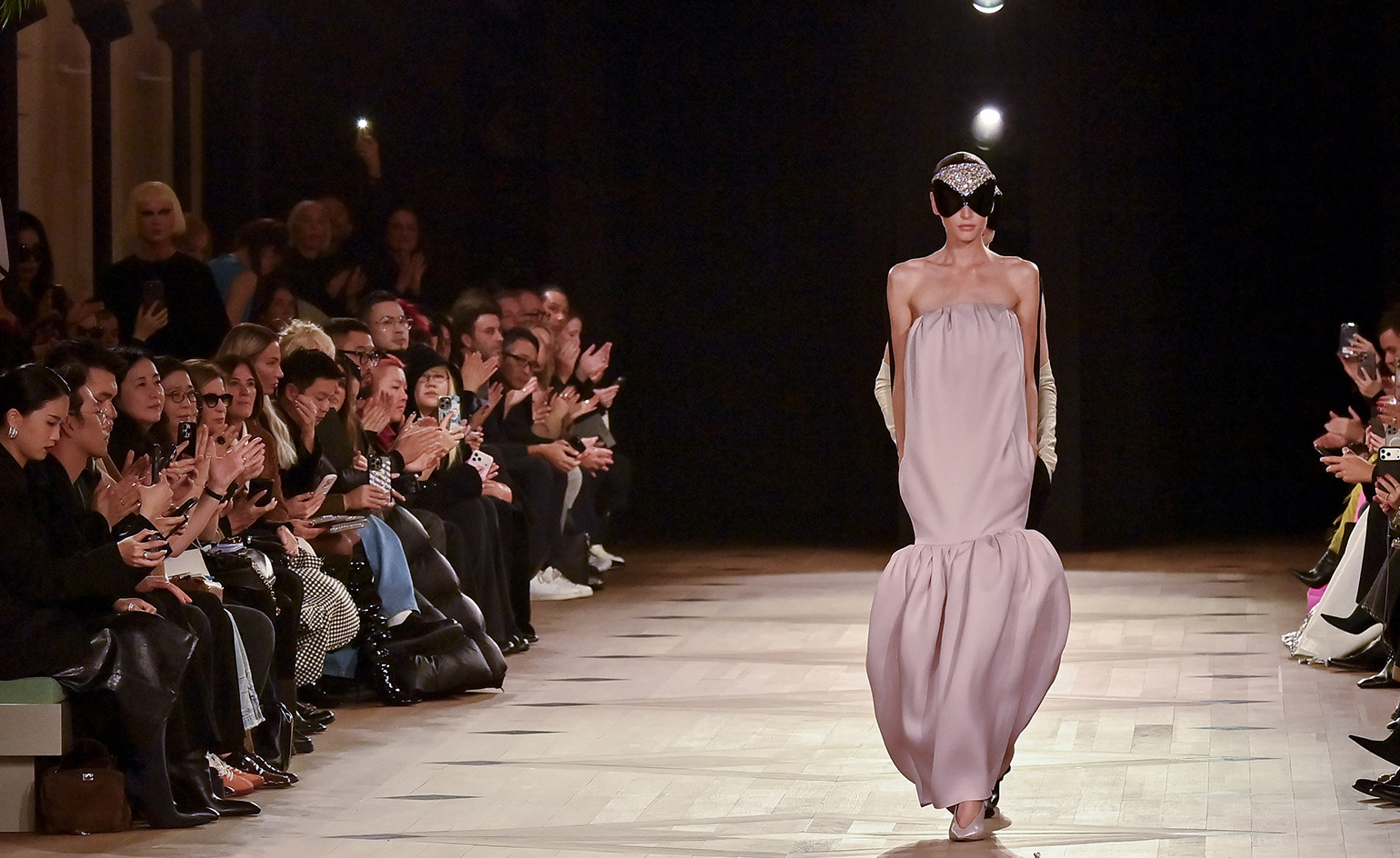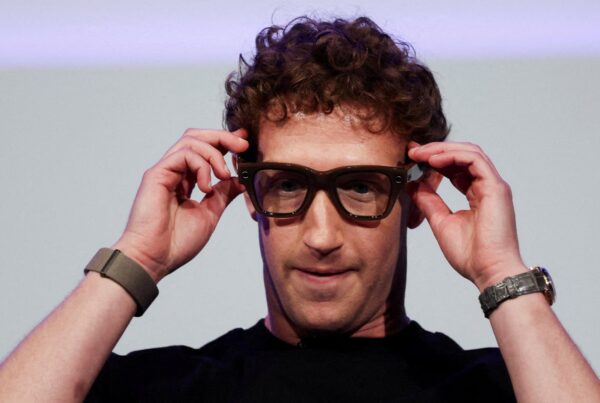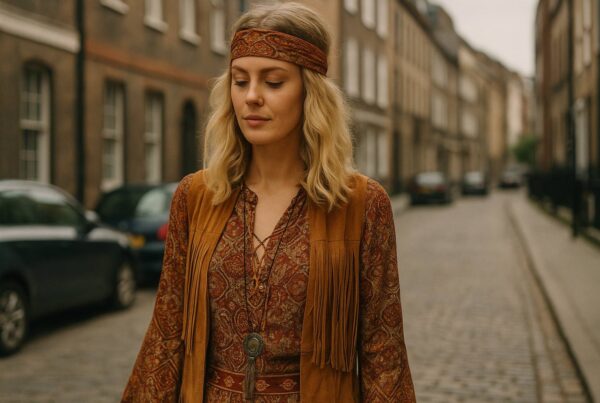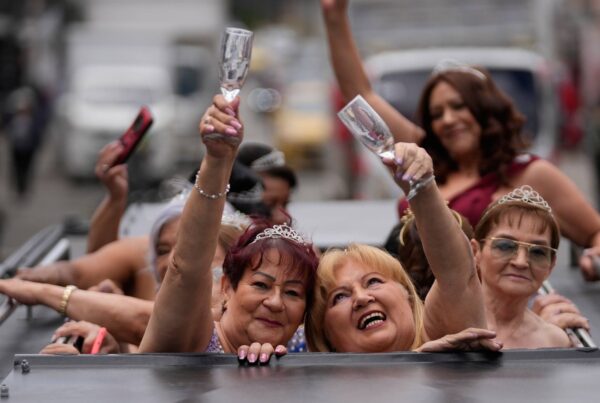Piccioli’s Balenciaga has officially made its resounding debut, marking a new chapter for the storied fashion house at Paris Fashion Week 2025. In a highly anticipated show, new artistic director Pierpaolo Piccioli unveiled his first collection, themed “The Heartbeat,” presenting a vision that meticulously balances the house’s couture legacy with a distinctly modern, human touch. The event also captured global attention with the front-row presence of Meghan Markle, the Duchess of Sussex, in her first Paris Fashion Week appearance in three years.
A New Rhythm for a Legendary House
The appointment of Pierpaolo Piccioli was seen as a pivotal moment for Balenciaga, and his inaugural collection sought to establish a new creative pulse. The theme, “The Heartbeat,” was more than a mere title; it was the foundational concept that influenced everything from the show’s soundscape a rhythmic, evolving beat to the very construction of the garments, which seemed to move with a life of their own. This debut was a deliberate statement, shifting the brand’s aesthetic while honoring its core identity.
Piccioli’s approach was immediately apparent in his masterful fusion of seemingly disparate worlds: the rarefied air of haute couture and the grounded reality of everyday style. He explored this duality with intelligence and grace, demonstrating that exceptional craftsmanship need not be reserved for evening gowns. Instead, he infused everyday silhouettes with luxurious details, suggesting that beauty and artistry are essential components of daily life, not just special occasions. This philosophy signals a thoughtful evolution for the brand, aiming to connect with a contemporary audience on a more personal level.
The “Heartbeat” Concept Unveiled
The “Heartbeat” theme was translated into a multi-sensory experience. As models took to the runway, the ambient sound of a steady heartbeat filled the space, gradually layering with a minimalist electronic score that swelled and receded, mirroring the flow of life itself. This auditory backdrop created an intimate, almost meditative atmosphere, drawing the audience closer to the narrative Piccioli was weaving. The collection was a direct reflection of this rhythm, emphasizing movement, fluidity, and the subtle pulse of modern existence.
Visually, the theme manifested in flowing fabrics and silhouettes that allowed for unrestricted movement. Silk blouses were cut with generous volume, their sleeves billowing like captured breath, while skirts and dresses featured soft pleats and asymmetrical hemlines that swayed with each step. Piccioli used color to further this idea, starting with a monochrome palette of blacks, whites, and grays before introducing vibrant bursts of crimson and electric blue, symbolizing moments of passion and intensity. The entire presentation for Piccioli’s Balenciaga felt deeply personal and emotionally resonant.
This collection was not about rigid, architectural forms but about a softer, more organic structure. For instance, a tailored blazer was deconstructed, its sharp lines softened and its fabric rendered in a lightweight wool that draped effortlessly over the body. Similarly, classic trench coats were re-envisioned with subtle cutouts and fluid inserts, allowing them to breathe and adapt. It was a clear departure from more severe aesthetics, proposing a wardrobe that is both powerful and profoundly human.
A Fusion of Couture and Daily Life
The true genius of the collection lay in its seamless integration of couture techniques into wearable, everyday pieces. Piccioli challenged the conventional separation between daywear and eveningwear, arguing for a more fluid approach to dressing. This was evident in items like a simple cotton poplin shirt, which was elevated with intricate, hand-stitched embroidery along the collar and cuffs a detail that might otherwise be found on a formal gown. It was a quiet statement on the value of craftsmanship.
Another standout example was the treatment of denim. A pair of straight-leg jeans, a staple of modern wardrobes, was reimagined with a sculptural quality, featuring precise darts and seams that recalled bespoke tailoring. Paired with a delicate, sheer organza top, the look perfectly encapsulated the collection’s central thesis: the elevation of the ordinary. This thoughtful combination of high and low demonstrated a deep respect for both heritage and modernity, making Piccioli’s Balenciaga feel both timeless and incredibly current.
Furthermore, Piccioli played with texture to create a rich tactile experience. A cozy knit sweater was interwoven with fine metallic threads, giving it a subtle glimmer that caught the light. A structured leather jacket was softened with panels of supple suede, creating a dynamic contrast. These details showcased a meticulous attention to material and form, ensuring that each piece was not just visually striking but also a pleasure to wear. The collection ultimately offered a new kind of luxury—one based on comfort, versatility, and personal expression.
A Reverent Nod to the Archives
While the collection felt refreshingly new, it was also deeply rooted in the history of Balenciaga. Piccioli made it clear that he was not erasing the past but rather engaging in a thoughtful dialogue with it. He delved into the house’s extensive archives, drawing inspiration from the revolutionary work of its founder, Cristóbal Balenciaga. This respect for legacy provided a solid foundation upon which to build his forward-thinking vision.
The collection was peppered with subtle homages to the master couturier, from the cocoon-like shapes of certain coats to the expert manipulation of volume in the sleeves and skirts. However, these references were never literal or nostalgic. Instead, Piccioli filtered them through a contemporary lens, ensuring they felt relevant for today’s world. It was a delicate balancing act honoring a formidable legacy while confidently asserting a new creative direction.
The Iconic Sack Dress Revisited
One of the most direct and celebrated tributes within the collection was the reinterpretation of Cristóbal Balenciaga’s iconic “sack dress” from the 1950s. The original dress was a groundbreaking piece of design, liberating women from the restrictive, cinched-waist silhouettes of the era by introducing a loose, unfitted shape. Piccioli’s modern take captured this same spirit of freedom and ease, but with a decidedly 21st-century sensibility that defines the new era of Piccioli’s Balenciaga.
His updated versions of the sack dress were crafted from innovative, lightweight materials, such as technical silk and bonded jersey, which gave them a fluid, almost weightless quality. He experimented with form, presenting asymmetrical variations with cascading drapes of fabric on one side or subtle cutouts that revealed a hint of skin. These dresses were not about concealing the body but about celebrating its natural form and movement, offering a sense of effortless elegance.
The color palette for these pieces ranged from a stark, minimalist white to a deep, resonant black, allowing the focus to remain on the purity of the silhouette. In one particularly striking look, a sack dress was rendered in a vibrant, digital floral print, merging a historical reference with a contemporary artistic technique. This thoughtful reimagining demonstrated Piccioli’s ability to honor the conceptual weight of an archival piece while making it feel entirely new and desirable for a modern audience. More details on archival reinterpretations can be found in runway analyses from sources like Vogue.
The Royal Seal of Approval
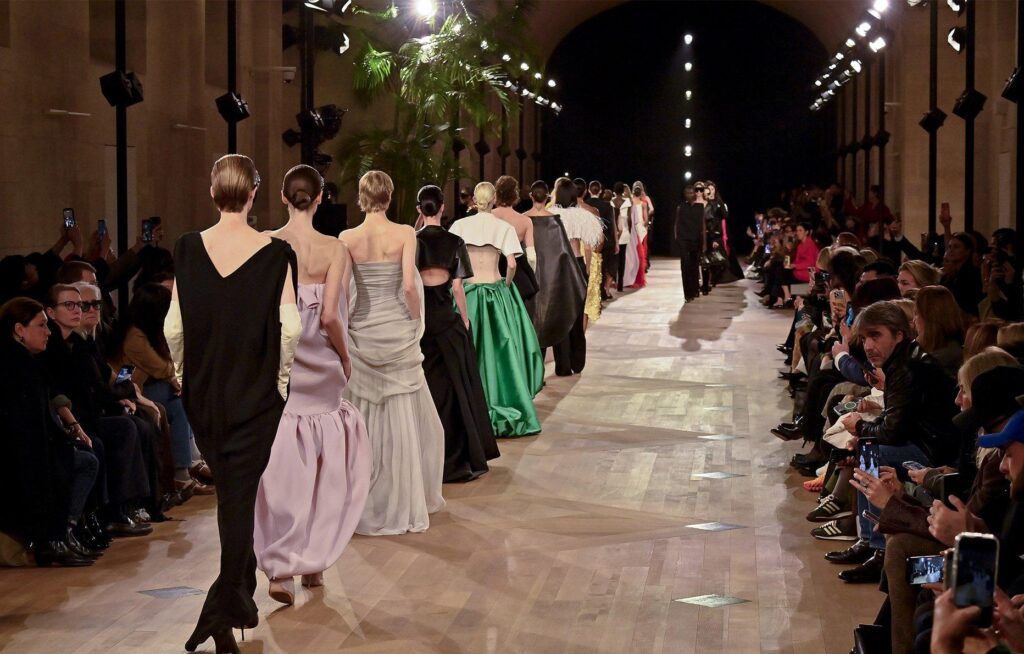
Adding to the considerable buzz surrounding the show was the presence of Meghan Markle, the Duchess of Sussex, seated in the front row. Her attendance marked her first appearance at Paris Fashion Week in three years, and her choice to attend the debut of Piccioli’s Balenciaga was widely interpreted as a significant endorsement of the designer’s new direction. Her presence guaranteed that the show would dominate headlines far beyond the fashion press.
The Duchess wore a look from the newly unveiled collection: a sleek, black, floor-length coat with a minimalist silhouette, paired with understated accessories. Her choice of attire was a perfect embodiment of the collection’s ethos of quiet confidence and timeless elegance. Her presence created a powerful moment, bridging the worlds of royalty, celebrity, and high fashion, and instantly catapulted the collection into the global spotlight.
Analysts and commentators noted that Markle’s return to such a high-profile fashion event was a strategic and impactful move. As a global style icon, her support provides an invaluable boost to any brand. Her decision to champion Piccioli’s first collection for the house signals a belief in his vision and aligns her own sophisticated, modern aesthetic with the brand’s new chapter. For those following trends, her appearance is a major indicator of what’s to come.
In summary, Pierpaolo Piccioli’s debut for Balenciaga was a resounding success, establishing a clear, compelling, and deeply human vision for the future of the brand. By masterfully blending archival reverence with contemporary wearability under the emotive theme of “The Heartbeat,” he has set a new rhythm for the legendary house. The collection was not just a display of beautiful clothes but a thoughtful exploration of how fashion can connect with our daily lives.
For more in-depth analysis and exclusive coverage of the latest runway shows, continue exploring the fashion section on Olam News.

